Filter by
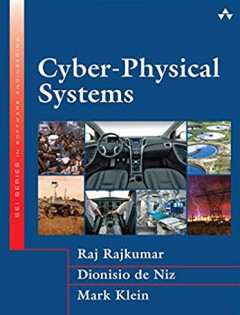
Cyber physical systems
Contents: Part I Medical-physical system application domains Chapter 1 Medical cyber-physical systems 1.1 Introduction and motivation 1.2 System description and operational scenarios 1.3 Key design drivers and quality attributes 1.4 Practitioner implications 1.5 Summary and open challenges References Chapter 2 Energy cyber-physical systems 1.1 Introduction and motivation 1.2 Sys…
- Edition
- --
- ISBN/ISSN
- 9780321926968
- Collation
- xix, 396 hal.; ilus.; 24 cm
- Series Title
- --
- Call Number
- 629.8 RAJ c
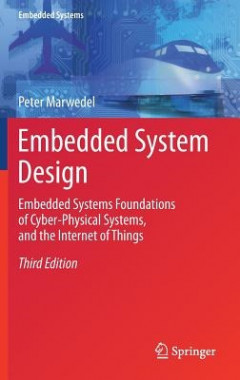
Embedded system design: embedded systems, foundations of cyber-physical syste…
Contents: 1 Introduction 1.1 History of terms 1.2 Opportunities 1.3 Challenges 1.4 Common characteristic 1.5 Curriculum integration of embedded systems 1.6 Design flow 1.7 Structure of this book 1.8 Problems 2 Specifications and modeling 2.1 Requirements 2.2 Models of computation 2.3 Early design phases 2.4 Communiacating finite state machines (CFSMs) 2.5 Data fl…
- Edition
- Third edition
- ISBN/ISSN
- 9783319560434
- Collation
- xxiv, 423 hal.; ilus.; 24 cm
- Series Title
- --
- Call Number
- 004.21 MAR e

The grid core technologies
Contents; 1 An introduction to the grid Part One System infrastructure 2 OGSA and WSRF 3 The semantic grid and autonomic computing Part Two Basic services 4 Grid security 5 Grid monitoring Part Three Job management and user interaction 6 Grid scheduling and resource management 7 Workflow management for the grid 8 Grid portals Part Four Application 9 Grid applications-case…
- Edition
- --
- ISBN/ISSN
- 9780470094174
- Collation
- xi, 423 hal.; ilus.; 25 cm
- Series Title
- --
- Call Number
- 005.36 Li g

Cyber-physical systems: integrated computing and engineering design
Contents: SECTION I BASICS 1 Cyber-physical systems concepts 2 Cyber-physical systems: design challenges 3 Mobile cyber physical systems SECTION II DESIGN PRINCIPLES 4 Cyber-physical system controls 5 Apprenticeship learning for cyber-physical system intelligence 6 Application of HDP-HMM in recognition of dynamic hand gestures 7 On modeling issues in cyber-physical systems …
- Edition
- --
- ISBN/ISSN
- 9781466577008
- Collation
- xx, 378 hal.; ilus.; 26 cm
- Series Title
- --
- Call Number
- 629.8 FEI c
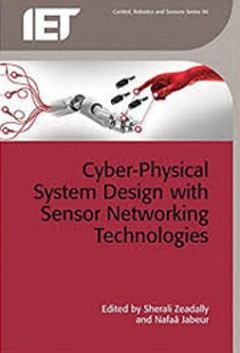
Cyber-physical system design with sensor networking technologies
Contents: 1 Wireless sensor networks: basics and fundamentals 2 Cyber-physical systems: basics and fundamentals 3 Integrating wireless sensor networks and cyber-physical systems: challenges and opportunities 4 Enabling cyber-physical systems architectural design with wireless sensor network technologies 5 Cyber security in cyber-physical systems: on false data injection attacks in t…
- Edition
- --
- ISBN/ISSN
- 9781849198240
- Collation
- xxii, 340 hal.; ilus.; 24 cm
- Series Title
- IET control engineering series 96
- Call Number
- R004.6 ZEA c
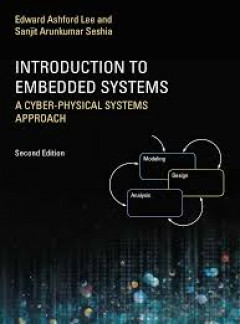
Introduction to embedded systems: a cyber-physical systems approach
Contents: 1 Introduction 1.1 Applications 1.2 Motivating example 1.3 The design process 1.4 Summary I Modeling dynamic behaviors 2 Continuous dynamics 2.1 Newtonian mechanics 2.2 Actor models 2.3 Properties of systems 2.4 Feedback control 2.5 Summary Exercises 3 Discrete dynamics 3.1 Discrete systems 3.2 The notion of state 3.3 Finite-state machines 3.4 Ex…
- Edition
- Second Edition
- ISBN/ISSN
- 9780262533812
- Collation
- xxii, 538 hal.; ilus.; 24 cm
- Series Title
- --
- Call Number
- 006.22 LEE i
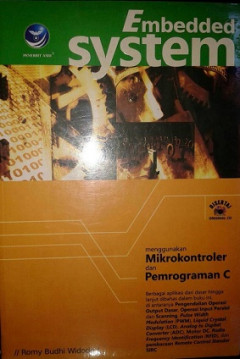
Embedded system menggunakan mikrokontroler dan pemrograman C
Daftar isi: PERIHAL DASAR TENTANG MIKROKONTROLER 1.1 Arsitektur mikrokontroler 1.2 Kaki kaki (pin out ) mikrokontroler 1.3 Perangkat keras dan perangkat lunak pemograman 1.4 Simpulan 1.5 Latihan 1.6 Umpan balik PEMOGRAMAN C PADA MIKROKONTROLER MCS-51 2.1 Perndahuluan 2.2 dasar pemograman 2.3 perulang 2.4 Fungsi 2.5 port keluaran kikrokontroler 2.6 driver output mikrokontroler…
- Edition
- Ed. I
- ISBN/ISSN
- 9789792907056
- Collation
- xxii, 250 hlm.; ilus.; 23 cm
- Series Title
- --
- Call Number
- 629.8 ROM e

Embedded systems with ARM cortex-M Microcontrollers in assembly languange and C
Table of Contents See a Program Running Data Representation ARM Instruction Set Architecture Arithmetic and Logic Load and Store Branch and Conditional Execution Structured Programming Subroutines 64-bit Data Processing Mixing C and Assembly Interrupts Fixed-point and Floating-point Arithmetic Instruction Encoding and Decoding …
- Edition
- Second Edition
- ISBN/ISSN
- 9780982692639
- Collation
- xiii, 664 hal.; ilus.; 25 cm
- Series Title
- --
- Call Number
- 005.262 YIF
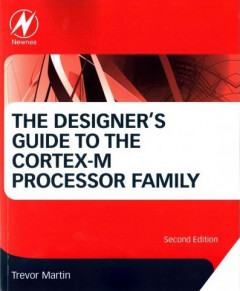
The designer's guide to the cortex-M processor family
Contents Chapter 1: Introduction to the contex-M processor family Chapter 2: Developing software for the cortex-M family Chapter 3: Cortex-M architecture Chapter 4: Cortex microcontroller software interface standard Chapter 5: Advanced architecture features Chapter 6: Cortex-M7 processor Chapter 7: Debugging with coreSight Chapter 8: Practical DSP for cortex-M4 and cortex-M7 Chapter …
- Edition
- --
- ISBN/ISSN
- 9780081006290
- Collation
- xxi, 468 hal.; ilus.; 24 cm
- Series Title
- --
- Call Number
- 005.262 MAR d

Cyber-risk informatics: engineering evaluation with D\data science
Table of contents: 1. Metrics, statistical quality control and basic reliability in cyber-risk 2. Complex network reliability evaluation and estimation in cyber-risk 3. Stopping rules for reliability and security tests in cyber-risk 4. Security assessment and management in cyber-risk 5. Game-theoretic computing in cyber-risk 6. Modeling and simulation in cyber-risk 7. Cloud computing in …
- Edition
- --
- ISBN/ISSN
- 9781119087519
- Collation
- xxxii, 526 hal.; ilus.; 24 cm
- Series Title
- --
- Call Number
- 005.82 SAH c
 Computer Science, Information & General Works
Computer Science, Information & General Works  Philosophy & Psychology
Philosophy & Psychology  Religion
Religion  Social Sciences
Social Sciences  Language
Language  Pure Science
Pure Science  Applied Sciences
Applied Sciences  Art & Recreation
Art & Recreation  Literature
Literature  History & Geography
History & Geography